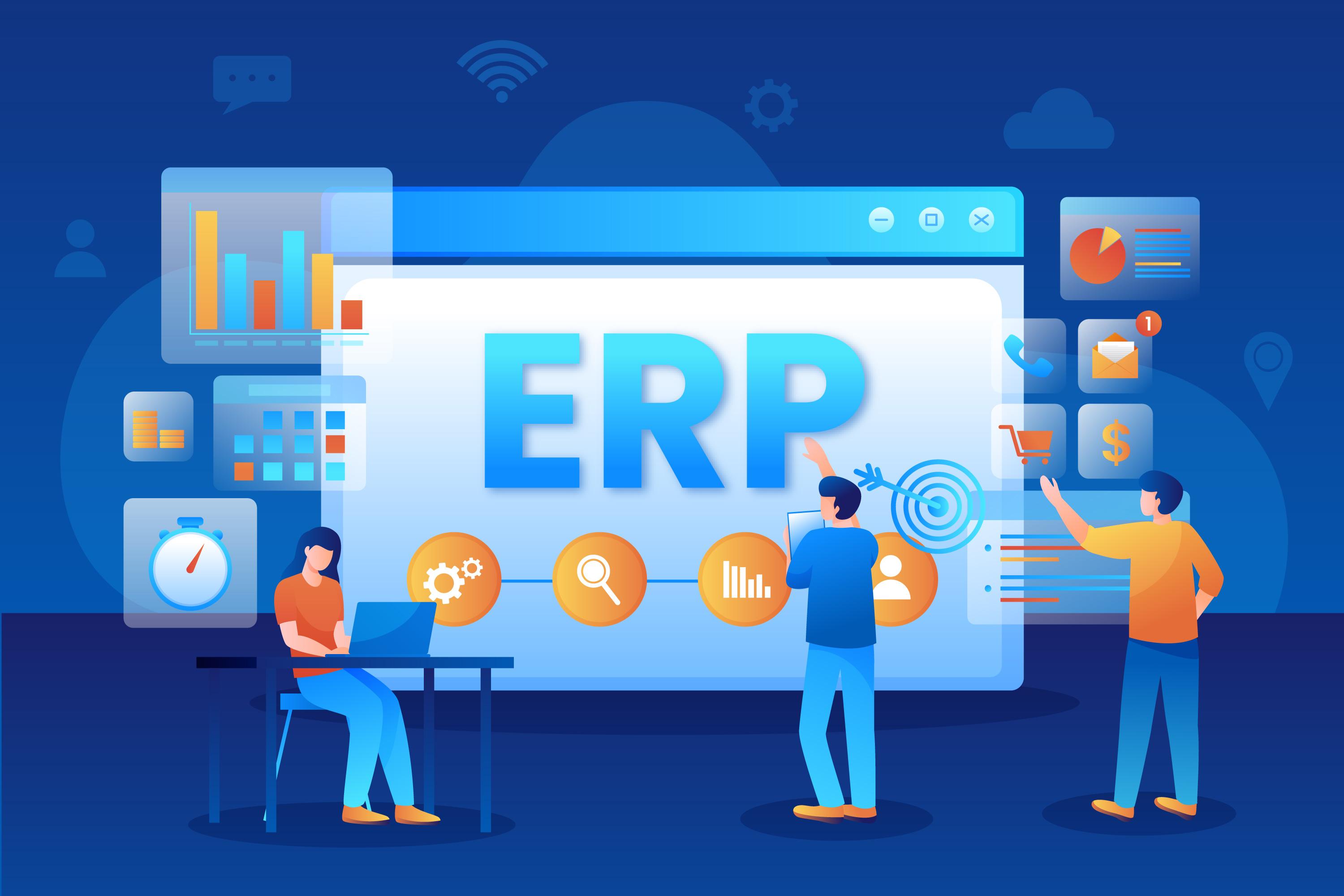Enterprise Resource Planning (ERP) systems are software applications that integrate various business processes and functions. It involves accounting, inventory, human resources, sales, and marketing in a single system.
ERP systems aim to improve efficiency, productivity, and decision-making by providing a unified and consistent view of the organization’s data and resources.
These systems have evolved significantly over the years, from centralized and monolithic systems to modular and cloud-based systems.
In this blog, we will explore the history and trends of ERP systems and how they can help organizations navigate the digital age.
The Origins of ERP Systems
ERP systems were first conceptualized in the 1960s. Manufacturers used computer systems to manage their production planning and inventory control.
These systems were known as material requirements planning systems (MRP). They helped manufacturers optimize their material usage and reduce waste.
In the 1970s and 1980s, MRP systems expanded to include other aspects of manufacturing, such as quality control, engineering, and shop floor control.
These systems were called Manufacturing Resource Planning (MRP II) systems, and they enabled manufacturers to coordinate their production schedules and resources.
MRP II systems evolved to encompass other business functions beyond manufacturing, such as finance, human resources, and customer service.
These systems were known as Enterprise Resource Planning (ERP) systems. They integrated the data and processes of different departments and functions into a single system. Institute management systems are ERP systems for educational organizations.
The Institute Management System simplifies and connects the day-to-day activities and information exchange within the institute. It ensures that resources like students, staff, materials, funds, and books are well-coordinated through the use of information.
The Trends Of ERP Systems
ERP systems have undergone several changes and innovations over the years, driven by technological advancements and changing business needs.
Some of the major trends in ERP systems are:
-
Modularity
ERP systems have become more modular and flexible. It allows organizations to choose and customize the modules and features that suit their specific needs and preferences.
For example, an organization can select modules for accounting, inventory, and sales and integrate them with other software applications or systems.
-
Cloud Computing
These systems have moved to the cloud. It enables organizations to access their data and applications over the Internet rather than installing and maintaining them on their servers.
Cloud-based ERP systems offer several benefits, such as lower costs, higher scalability, better security, and easier updates and maintenance.
-
Mobility
ERP systems have become more mobile-friendly. It allows users to access and interact with their data and applications on their smartphones, tablets, or other devices.
These systems enhance the convenience, accessibility, and productivity of users, especially those who work remotely or on the go.
-
Artificial Intelligence
ERP systems now include artificial intelligence (AI) and machine learning (ML) features.
It includes natural language processing, data analytics, and predictive modeling to provide more intelligent and automated solutions.
AI-enabled institute management systems can help organizations improve their decision-making, forecasting, and optimization. Additionally, it helps detect and prevent errors, fraud, and anomalies.
The Benefits of ERP Systems
ERP systems can help organizations navigate the digital landscape by providing them with several benefits, such as:
-
Improved Efficiency
These systems can simplify and automate various business processes and functions, reducing manual work, errors, and delays.
These institute management systems can also eliminate data duplication and inconsistency, ensuring data accuracy and integrity.
-
Enhanced Visibility
ERP systems can provide a comprehensive and real-time view of the organization’s data and resources. It enables users to access and share information across different departments and functions.
These systems can also provide dashboards and reports that display key performance indicators and metrics. Users can monitor and evaluate their progress and performance.
-
Increased Collaboration
ERP systems can facilitate communication and collaboration among employees, administrators, and parents.
They can also support workflows and approvals, ensuring that tasks and projects are completed according to the predefined rules and standards.
-
Greater Agility
Organizations can respond and adjust to shifting consumer needs and market situations thanks to the system. It provides them with the flexibility and scalability to modify and expand their data and applications.
It helps organizations innovate and create new products and services by providing tools and insights to identify and exploit opportunities.
The Future of ERP Systems
ERP systems are expected to continue to evolve and improve in the future by incorporating new technologies and features:
-
Internet of Things (IoT)
IoT devices and sensors can be integrated with ERP systems. It includes smart meters, cameras, and wearables to collect and analyze data from various sources and locations.
IoT-enabled ERP systems can help organizations optimize their operations, assets, and resources, as well as enhance their customer experience and satisfaction.
-
Blockchain
ERP systems can use blockchain technology, which is a distributed and decentralized ledger. It records and verifies transactions to enhance their security, transparency, and trust.
Blockchain-enabled ERP systems can help organizations prevent data tampering and fraud, and enable faster and cheaper transactions and payments.
-
Social Media
The systems can integrate with social media platforms, such as Facebook, Twitter, and LinkedIn. It gathers and uses data from various online channels and communities.
Social media-enabled ERP systems can help organizations improve their marketing, sales, and customer service. Additionally, it engages and interacts with its customers and prospects.
Conclusion
ERP systems are software applications that integrate various business processes and functions into a single system. These systems have evolved significantly over the years, from centralized and monolithic systems to modular and cloud-based systems.
It can help organizations navigate the digital landscape by providing them with improved efficiency, enhanced visibility, increased collaboration, and greater agility.
ERP systems are also expected to incorporate new technologies and features in the future.


